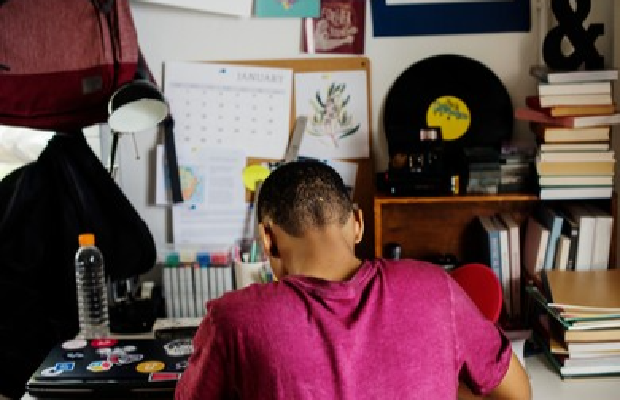Triplet code - Simple question
. How is DNA read off? Is it split into it's constituent strands by DNA helicase and then read by polymerase?
.But how does the triplet code work? Does it read 1 base from the left strand, 1 from the right, 1 from the left (alternate), or does it read three off from, say, the right one.
But if that were the case, wouldn't it mean the left strand could "get in the way", like surely the polymerase could read that by mistake and produce the wrong amino acids and proteins?
Anyone understand where I'm coming from?
. How is DNA read off? Is it split into it's constituent strands by DNA helicase and then read by polymerase?
.But how does the triplet code work? Does it read 1 base from the left strand, 1 from the right, 1 from the left (alternate), or does it read three off from, say, the right one.
But if that were the case, wouldn't it mean the left strand could "get in the way", like surely the polymerase could read that by mistake and produce the wrong amino acids and proteins?
Anyone understand where I'm coming from?
I'm not entirely sure what you're getting at here but I'll try and answer.
By DNA "read off" do you mean transcription? If that is the case it unzips using DNA helicase and then the template strand is used to create a strand of mRNA using RNA polymerase.
For transcription the triplet code is essentially irrelevant. All that matters is the promoter and terminator region. RNA polymerase recognises the promoter, binds and then transcribes all the DNA between and then stops at the terminator sequence.
In terms of "reading" only one strand is used and the other strand can't just get in the way because RNA polymerase must be bound to it which it isn't.
If you're asking about DNA replication my answer is pretty much the same except replace RNA polymerase with DNA polymerase, initiator with origin and the fact that both strands are used as a template but both have their own separate DNA polymerases acting on them.
I hope that is what you were asking...if not please feel free to ask again.
. How is DNA read off? Is it split into it's constituent strands by DNA helicase and then read by polymerase?
.But how does the triplet code work? Does it read 1 base from the left strand, 1 from the right, 1 from the left (alternate), or does it read three off from, say, the right one.
But if that were the case, wouldn't it mean the left strand could "get in the way", like surely the polymerase could read that by mistake and produce the wrong amino acids and proteins?
Anyone understand where I'm coming from?
In answer to your second, the first codon to be read always codes for methionine. This makes it less likely for a gene to be read back to front. There may also be other mechanisms to prevent backwards reading that I don't know about.
Actually a very important thing is to make sure translation occurs at the correct methionine codon. Methionine isn't only used as a start codon but as a normal amino acid as well so there are methods in place to make sure the correct AUG sequence is recognised (in eukaryotes it's the first AUG after a cap on the mRNA which is the start...in prokaryotes it's a sequence of bases that the ribosome recognises followed by an AUG which is the start).
Generally there is no problem with backward coding as there will be a very different structure at both ends. In eukaryotes you have the cap (an upside guanine) at the start end and at the other end a tail of about 200 adenines (which act like a fuse on a bomb, telling the cell how long the mRNA should survive within the cell)/
Quick Reply
Related discussions
- Help molecular biology question
- Edexcel Biology A Paper 1 - 7th June 2023 [Exam Chat]
- A Level Computer Science CIE
- NMR question
- Computer science NEA
- Help urgent chem
- WJEC Computer Science A-level
- Applying to adjacent/similar courses
- Spectroscopy help
- AQA A - level Computer Science Skeleton Code 2023 - Dastan
- Structural and language devices!!!-english help
- AQA A Level computer science Skeleton code 2024
- National 5 Computing Science: Visual Basic question
- PWC technology degree apprenticeship
- A level Computer science OCR NEA
- Numerical solution
- Amazon Data analyst apprenticeship
- A-level Chemistry Question
- How to write an opinion article
- Silver Idea coding software
Latest
Last reply 1 minute ago
Official London School of Economics and Political Science 2024 Applicant ThreadLast reply 1 minute ago
Official: University of St Andrews A100 Offer Holders 2024 entryPosted 2 minutes ago
MoJ Application status - what does 'on hold' mean?Last reply 5 minutes ago
Can I get an A/A* using claire bio and ms estruch vids for OCR A level biologyLast reply 13 minutes ago
Searching for a KCL Postgrad to take over my accommodation contractLast reply 14 minutes ago
TSR Study Together - STEM vs Humanities!Last reply 14 minutes ago
Official UCL Offer Holders Thread for 2024 entryLast reply 15 minutes ago
Weidenfeld Hoffmann Trust (WHT) Scholarship Notification (2024-2025)Last reply 15 minutes ago
ATAS (Academic, Technology, Approval Scheme) Certificate 2023/2024Last reply 16 minutes ago
yet to receive a woodhouse interviewLast reply 17 minutes ago
Government Social Research - Research Officer Scheme 2024Last reply 18 minutes ago
Official University of the Arts London Applicant Thread for 2024Trending
Last reply 21 hours ago
GCSE Biology Study Group 2023-2024Last reply 3 days ago
A-level Biology Study Group 2023-2024Last reply 6 days ago
Need detailed and specific OCR Biology notes before alevel exam.Last reply 1 week ago
SNAB biology- Access to end-of-topic tests/summaries 2024Last reply 1 week ago
a level biology mitosis questionLast reply 2 weeks ago
Biology surface area to volume rationLast reply 3 weeks ago
aqa biology aslevel calculation question FVCPosted 4 weeks ago
SNAB biology 2024 scientific articleLast reply 4 weeks ago
Resources for edexcel a (snab) a level biology?Last reply 1 month ago
Im losing my mind over this and I don't know where I keep going wrongLast reply 1 month ago
Aqa biology a level paper 3 2023Last reply 2 months ago
AQA A Level Biology Paper 1 2018Last reply 3 months ago
how do you do this please explain stepsLast reply 5 months ago
biology math question ratios alevel aqaLast reply 5 months ago
biology aqa alevel proteins question past paperTrending
Last reply 21 hours ago
GCSE Biology Study Group 2023-2024Last reply 3 days ago
A-level Biology Study Group 2023-2024Last reply 6 days ago
Need detailed and specific OCR Biology notes before alevel exam.Last reply 1 week ago
SNAB biology- Access to end-of-topic tests/summaries 2024Last reply 1 week ago
a level biology mitosis questionLast reply 2 weeks ago
Biology surface area to volume rationLast reply 3 weeks ago
aqa biology aslevel calculation question FVCPosted 4 weeks ago
SNAB biology 2024 scientific articleLast reply 4 weeks ago
Resources for edexcel a (snab) a level biology?Last reply 1 month ago
Im losing my mind over this and I don't know where I keep going wrongLast reply 1 month ago
Aqa biology a level paper 3 2023Last reply 2 months ago
AQA A Level Biology Paper 1 2018Last reply 3 months ago
how do you do this please explain stepsLast reply 5 months ago
biology math question ratios alevel aqaLast reply 5 months ago
biology aqa alevel proteins question past paper




